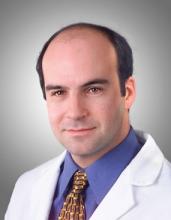Low-dose computed tomography screening of those at high risk for lung cancer has received a grade B recommendation from the U.S. Preventive Services Task Force. Initially available for public comment in July 2013, the Task Force’s recommendations are now final and published.
The action allows the Centers for Medicare and Medicaid to mandate this service be provided without charging a copay or deductible. Widespread availability of screening raises concerns about inappropriate use of low-dose computed tomography (LDCT) and the associated costs of the procedure, physician experts noted in editorials and interviews.
More than a third of Americans are current or former smokers. Increasing age and cumulative exposure to tobacco smoke are the leading risk factors for lung cancer.
The USPSTF defines those at high-risk patients as heavy smokers who are aged 55-80 years and have a 30-pack-year or more habit, and former heavy smokers who have quit in the past 15 years. Screening should be discontinued once a person has not smoked for 15 years.
Patients also can be selected for screening based on risk factors other than tobacco use, including occupational exposures, radon exposure, family history, and incidence of pulmonary fibrosis or chronic obstructive lung disease.
Because of the potential for patients to experience "net harm, no net benefit, or at least substantially less benefit" from screening, the USPSTF stated it may be inappropriate to screen patients who have comorbidities that limit life expectancy, or who would be either unwilling or unable to have curative lung surgery.
Other forms of screening, including chest x-rays and sputum cytology, are not recommended because of their "inadequate sensitivity or specificity."
The USPSTF’s recommendations are based largely on a systematic review of several randomized, controlled trials published between 2000 and 2013, including the National Lung Screening Trial. That study of more than 50,000 asymptomatic adults, aged 55-74 years, showed a 16% reduction in lung cancer mortality and a 6.7% reduction in all-cause mortality when patients were screened using LDCT. One cancer death was averted for every 320 patients screened, and one death from all-causes was prevented in every 219 patients screened.
"Lung cancer causes as many deaths in the United States as the next three leading types of cancers combined, all of which already have screening interventions," wrote Dr. Frank C. Detterbeck of Yale University in New Haven, Conn., and Dr. Michael Unger of the Fox Chase Cancer Center in Philadelphia in an editorial accompanying the report.
And while the use of LDCT is part of a structured screening process, not just a scan, the USPSTF report does not address many of the practical aspects of implementing lung cancer screening, they said.
Many patients who are not necessarily high risk will present to their physicians with anxiety about developing lung cancer. "These people have reasons for their concerns; turning them away because they do not meet the criteria does not provide them the reassurance they seek," the editorialists wrote. An educated discussion usually eases the patient’s fear, but "this requires specialized knowledge and time. It is easier to give in and screen an anxious patient who does not meet the criteria."
As noted by the USPSTF, the potential harms of LDCT screening include false-negative and false-positive results, including the potential for incidental findings, overdiagnosis, and radiation exposure. "In a high-quality screening program, further imaging can resolve most false-positive results; however, some patients may require invasive procedures," the recommendations state.
Dr. Detterbeck and Dr. Unger wrote that effective screening hinges on reaching high-risk individuals, yet this is the population least likely to seek screening despite recognizing they are at risk. Further, chest CT is not a simple way to provide reassurance to anxious, lower-risk individuals. It is questionable whether primary care physicians will have the time and skill to advise patients on lung cancer screening and whether the "health care system is willing to support what the USPSTF is recommending."
Dr. Peter B. Bach, director of the Center for Health Policy and Outcomes at Sloan-Kettering Cancer Center in New York, authored a second editorial that accompanied the recommendations.
In an interview, he noted that issues of cost and counseling "matter a lot now that the Affordable Care Act links these recommendations to mandatory insurance benefits, which will then lead to automatic increases in health insurance premiums," according to Dr. Bach.
What is needed, he said, is more granular level of recommendations with more clinical utility.
"The expected degree of net benefit or level of certainty about the evidence is rarely uniform, even for selected populations," he wrote in his editorial. There are subgroups in which we have a lot of insight that screening is quite a bit more likely to help than harm, and the findings from the NLST should drive the approach.



